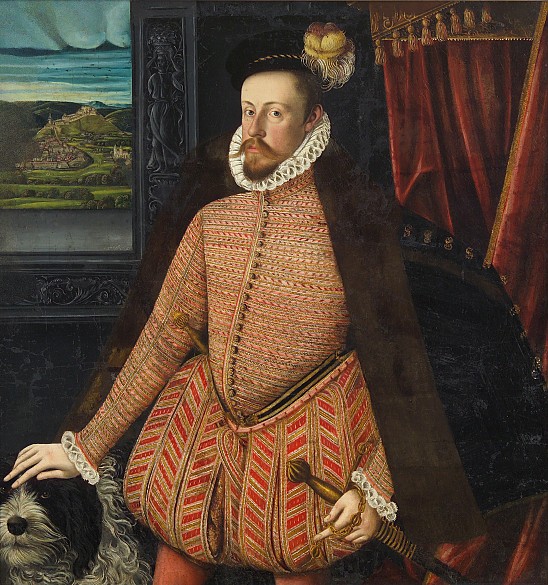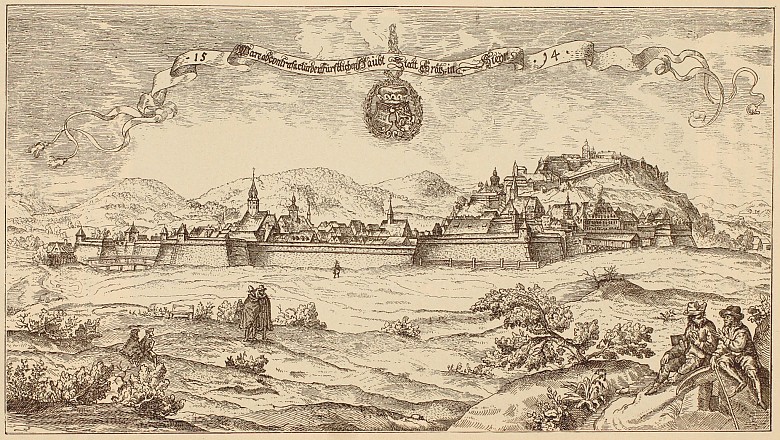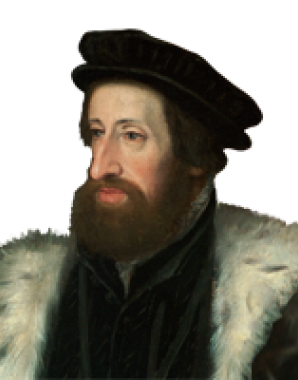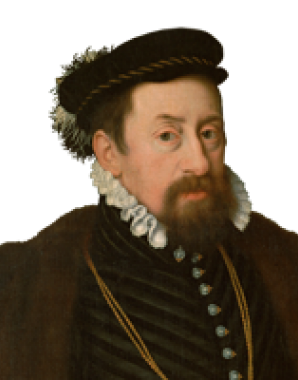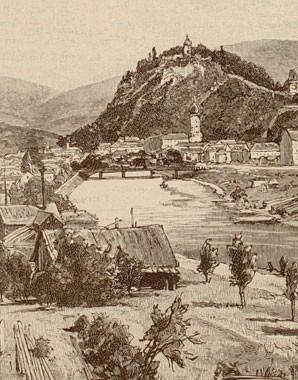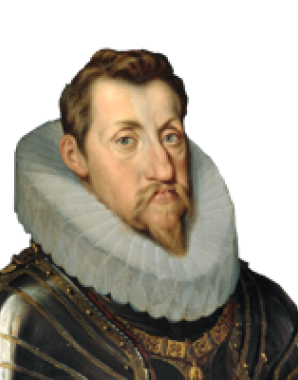Charles II as ruler of Inner Austria
As ruler over a dominion within the Habsburg Monarchy, Charles was confronted with the problems that were to determine the dynasty’s policies in the Early Modern age: the threat of Ottoman expansion and sectarian tensions. Charles’s own policies as ruler of Inner Austria veered between compromise and confrontation.
The twelfth child of Emperor Ferdinand I and Anna of Jagiello, who had brought the crowns of Bohemia and Hungary to the dynasty, Charles was born in Vienna on 3 June 1540. He was the youngest of three surviving sons.
From 1554, when Charles was fourteen years old, his father Ferdinand decided that his inheritance would be divided up between his sons. Charles was therefore assured of a secular throne and received the appropriate education and preparation for his future role.
Charles’s portion was Inner Austria, which comprised the south-eastern part of the Austrian patrimonial dominions. The main land in this portfolio of territories was Styria. The other territories were Carinthia and Carniola together with the regions of Gorizia and parts of Istria and Friuli as well as the Adriatic ports of Trieste and Fiume (present-day Rijeka).
Charles assumed the regency after the death of his father in 1564. In his residence at Graz he put in place a tightly regimented system of governance, re-organizing the Inner Austrian bodies of authority. In this the archduke was confronted with the same problems, albeit on a smaller scale, as his elder brother Maximilian II in his position as emperor and king of Bohemia and Hungary.
The rapid expansion of the Ottoman Empire represented an existential threat to the Austrian dominions. Inner Austria was most at risk as it bordered on the areas controlled by the Turks in the south of Croatia and Hungary. Charles was tasked by his elder brother with supervising defences in the south-east of the dominions, and Graz became the organizational centre of the military campaign. In order to prevent incursions in the hinterland, fortifications were built directly on the front. The key fort on the border was named Karlstadt (Karlovac) in honour of Archduke Charles.
These defensive measures were extremely costly and Charles needed the financial aid of the Estates, that is, the representatives of the nobility, monasteries and privileged cities which exercised local sovereignty over their subjects, the latter constituting the majority of the population. The Estates exploited the law governing the authorization of taxes, which lay in their hands, to influence their sovereign, as the laws of the time did not permit the ruler simply to levy taxes without the permission and organizational support of the Estates.
The second area of conflict was the Reformation, which constituted a political as well as religious problem. In the Early Modern era sovereignty implied not only the exercise of power in an administrative sense but also the right to determine the religion of one’s subjects. In the Austrian lands the majority of the population leaned towards Protestantism. However, the practice of this new faith was a legal grey area, and affiliation to Catholicism or Protestantism was at that time also politically coded. Whereas Catholics tended to support centralistic monarchical power, adherents of the Reformation were suspected of sympathizing with federalistic rule with extended participation in decision-making by the Estates.
In this matter Charles was forced to make concessions. In 1572 the Religious Pacification of Graz was concluded, guaranteeing the nobility freedom of religion, which was later extended to the urban patrician class. The problem here lay in its interpretation: did the guarantee of freedom of religion mean merely freedom of conscience, that is, the individual confession of faith, or also freedom of worship, which would have implied the right to develop an ecclesiastical organisation with schools and parishes, etc.? The ensuing legal and theological arguments had an enduring and detrimental effect on relations between the two sides.
Charles’s role in this process underwent a transformation. At first he was regarded as tolerant and pragmatic, with the result that his attitude towards the Protestant demands was criticized as too accommodating by his Spanish relations and the Curia. Under the influence of his devoutly Catholic wife he later increasingly identified with the aims of the Catholic Counter Reformation, now growing in reach and strength.
At first a solid basis for the renewal of the Church’s power had to be established, as the situation within the Catholic clergy was catastrophic. In 1580 a nunciature was founded in Graz as the seat of a papal envoy who would liaise between the Catholic powers of Europe. Charles also summoned the Jesuits to Graz, and the foundation of the university in 1585 created a training ground for the Catholic elite of the future.
Charles thus prepared the ground for the next, more aggressive phase of the Counter Reformation in Inner Austria that was to be associated with the name of his son Ferdinand.
The archduke died in Graz on 10 July 1590 and was interred in the mausoleum he had commissioned for himself in the abbey church at Seckau.
